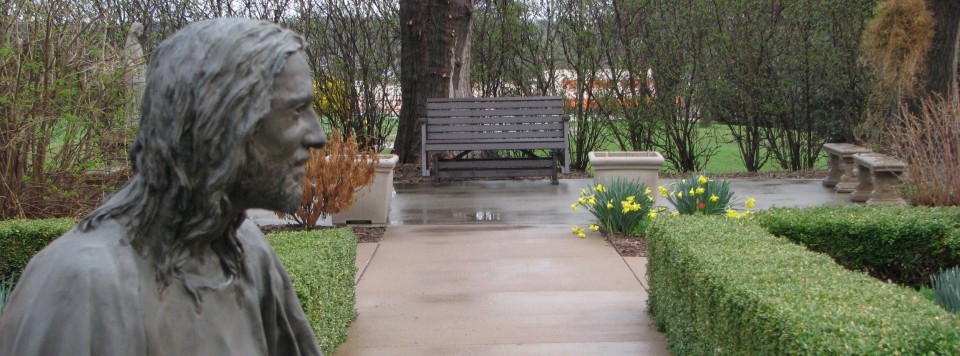Where are you in your grief journey? I’m assuming you are reading this because you are grieving, or know someone who is grieving, or you don’t think you are grieving but you are curious. One of the many professionals writing about grief is Dr. Susan Berger.
She is a psychologist who counsels the bereaved and has had her own grief journey.
Dr. Berger contends that the bereaved’s journey doesn’t really end, it just morphs into what she describes as the five ways of grief.
When Neil Peart’s wife died within a year of the death of his college-age daughter, Peart jumped on his BMW motorcycle in Ontario and headed west across Canada, south to Mexico and finally north back home. Peart, rock drummer of the band Rush, was what Berger describes as a Nomad, someone whose grief journey can be literal as they run away from their familial surroundings in a quest for relief from the overwhelming feelings of grief. Peart’s journey is recounted in Ghost Rider – Travels on the Healing Road.
Some Nomads can be caught up in drugs or alcohol, some just flit from place to place, job to job, or relationships. The newly bereaved are often in the Nomad pattern and usually exit for one of the other ways Berger labels as: Memorialist, Normalizer, Seeker and Activist.
The Memorialist seeks to keep alive the memory of the loved one who died. You have seen the crosses, the flowers and the flags on highway shoulders or medians. A Memorialist did that. Trees are planted in a playground or in a park in memory of children who have died too soon. Playgrounds are dedicated to deceased children.
The Activist goes beyond the Memorialist. She wants make sure no one else has to suffer needlessly. Candy Lightner founded MADD, Mothers Against Drunk Driving, in 1980 after her daughter, Cari, was killed by a repeat drunk driving offender. After his daughter was murdered by a convict out on parole for third time, a man in upstate New York lobbied vigorously for a law to keep repeat offenders from being paroled.
Here’s a link to an NPR story about a doctor who volunteered for military duty after his son died in Afghanistan (http://www.npr.org/templates/story/story.php?storyId=17013597). I think he can be classified as an activist; however he did what he did to keep his son’s memory alive.
If you pay attention to the news, on TV or in the newspaper or internet, and you’ll find examples every day of the bereaved channeling their grief as activists or memorialists. You may not see a story about the Seeker. The Seeker is looking to a higher power for relief.
Frank Bianco had almost given up on writing a book about Trappist monks. When his teenage son Michael died in a car accident, Frank was very angry with God. He thought researching the Trappists would take his mind off his grief and what better place than a Trappist monastery to find God and give Him a piece of his mind. He was seeking solace, answers, and who knows what else. He got his answer and he published a book, Voices of Silence.
A more recent Seeker is Marie Mutsuki Mockett author of When the Dead Pause, and the Japanese Say Goodbye. Marie was grieving the death of her American dad and sought answers in the traditional grieving ceremonies of her Japanese mother. It is worth the read to learn about Japanese culture, Buddhism and grief. Her journey takes her to Japan right after the tsunami destroyed and left thousands dead and thousands more bereaved.
Some grievers want everything to get back to normal. These Normalizers are best exemplified by Mary Tyler Moore in Ordinary People. The 1980 Robert Redford film depicting a family’s grief at the death of a son and brother. Moore is the mother who desperately tries to live a normal life after her son’s burial.
In real life, a man I know in Florida remarried within 12 months of his wife’s cremation. Fifteen months later he was divorced. Six months later he married again. He found his normal: being married, it just took a little longer. Bit of a nomad at first, but later stable and normal.
The Five Ways We Grieve: Finding Your Personal Path to Healing After the Loss of a Loved One, (http://www.amazon.com/Five-Ways-We-Grieve-Personal/dp/159030697X/) Just another way of looking at the journey we all will be taking someday.


It Breaks my heart that Our daughter will not let us see our granddaughter, she was and is a single parent and we had here since she was born and her mother as well. after they moved we continues to see her daily after school and took carew of her during summer vacation. She is 9 years old and I understand we may have been over involved and we always asked what our daughter wanted us to do or not to do.
I am in a support group “Alanon” and it is helping so much, I know she is safe. and her mother is taking care of her physical needs. but it is her emotional well being I worry about. He last message was we are cut off and all phones are blocked. tryed reaching out a few times but no response. If we just show up at her home or school I am fearful it will get worse for my Granddaughter. I know God is working but I want to fix it. Everyone says stay out of the way and let God work.
I am praying, crying and trying to say busy.This is minor comparied to alot of proplems other people have. I am fortunate to have friens and fellowship.
I need to trust in God.
But more Prayers will help.
MeMe and Papa.